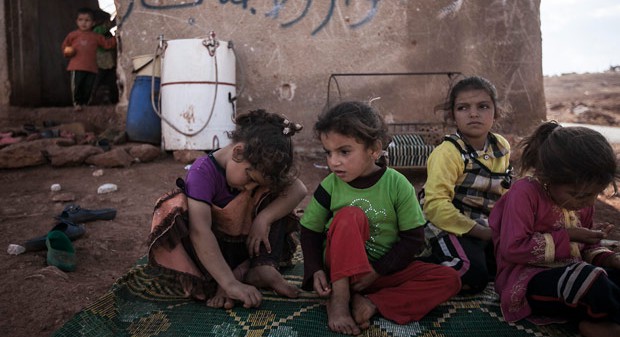
The situation on the ground in Syria has “dramatically” worsened as the country enters its fifth year of war amid escalating fighting and targeted attacks against civilians, the top United Nations humanitarian official warned this week as she urged the international community to bring the violence to an end.
“Civilians continue to bear the brunt of this conflict,” Under-Secretary-General for Humanitarian Affairs Valerie Amos told the Security Council Thursday afternoon during a briefing on the situation in Syria.
“The inability of this Council and countries with influence over the different parties at war in Syria to agree on the elements for a political solution in the country means that the humanitarian consequences will continue to be dire for millions of Syrians.”
The conflict, which began in March 2011, has already claimed more than 220,000 lives, according to UN estimates. Meanwhile, more than 12.2 million people continue to require life-saving aid. The fighting has also provoked massive displacement with more than 4 million people having sought refuge in neighboring countries, while a further 7.6 million are displaced within Syria.
The number of Syrians who are living in besieged areas — and risk death by starvation, dehydration and the lack of medical care — has doubled to roughly 440,000, Amos said. Of those people, only 304 were reached with food in January. At the same time, over 2 million people in Aleppo and Dar’a Governorates have been affected by willful denial of water and electricity by parties to the conflict this month.
In other areas where conditions deteriorate every day, parties to the conflict severely restrict access to those in need. In Raqqa and Deir ez Zor, the Islamic State of Iraq and the Levant (ISIL) has closed down the offices of several aid organizations, including the Syrian Arab Red Crescent. As a result, Syria has seen a resurgence of vaccine-preventable diseases like polio, which was once eradicated from the country.
In addition, Amos observed that children were “particularly badly affected” by the hostilities with 5.6 million children now in need of assistance and well over 2 million children out of school.
“Basic services continue to be deliberately attacked at cut,” she continued. “As needs grow humanitarian organizations need to reach more people, but we are facing increasing difficulties in reaching the 4.8 million people who live in areas which are hard to reach. And as the violence escalates and conflict lines continue to shift, I fear that these numbers will rise. Access continues to be constrained by insecurity and active fighting but the parties to the conflict are increasingly, deliberately obstructing the delivery of life-saving aid.”
In a recent briefing of the Security Council, the UN Office for the Coordination of Humanitarian Affairs (OCHA), which Amos heads, already cautioned that it could not keep up with the needs of Syria’s people because there is simply not enough funding. By the end of last year, the Syria Humanitarian Assistance Response Plan for 2014 was just 48 percent funded.
Lack of funding has already forced the World Food Program (WFP) to reduce rations by 30 percent. For every million dollars that WHO cannot raise in Syria, some 227,000 people lose vital health services. And unless urgent funding is received before May 2015, a million children will not be able to access education.
Pointing to the upcoming Kuwait Humanitarian Pledging Conference for Syria, to be held on March 31, Amos explained that the international community once again had “an opportunity to raise some of the resources required to maintain our life saving work” and encouraged Member States to “give generously.”
As the world has taken stock this month of Syria on the anniversary of the conflict, Amos pointed out some of the more grim findings: “Today, a Syrian’s life expectancy is estimated to be 20 years less that when the conflict started,” she said. “Unemployment is around 58 percent, up from around 10 percent in 2010; nearly two-thirds of all Syrians are now estimated to be living in extreme poverty.”
